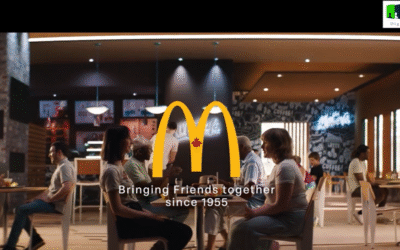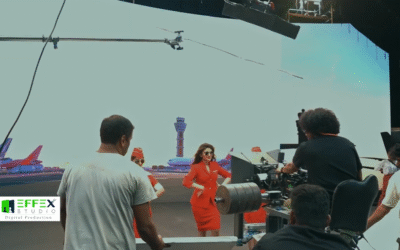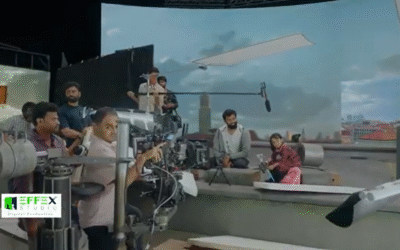Introduction
Climax scenes are some of the most visually intense and emotionally charged moments in a film. They demand precise timing, dynamic visuals, and immersive environments—all under high-pressure conditions. Traditional filmmaking methods often face challenges with location logistics, weather unpredictability, and post-production overload. This case study explores how a feature film’s climax was created using virtual ad film production, combining LED volume technology, real-time rendering, and in-camera effects to deliver a controlled yet cinematic result.
Objective
The goal was to stage a large-scale, emotionally powerful climax scene with moving camera setups, reactive lighting, and visual scope—entirely within a controlled environment. Using a virtual ad film production pipeline, the team aimed to reduce safety risks, eliminate scheduling complications, and retain high creative flexibility without compromising on cinematic quality.
Challenges
Shooting a climax sequence traditionally involves complex stunts, multi-location scouting, weather coordination, and significant visual effects. Issues like poor lighting continuity, background mismatches, and stunt safety can compromise the final product. Green screens often fall short in maintaining realistic reflections and parallax effects. To address this, the team turned to virtual ad film production, ensuring that every visual element was captured in real time and in-camera with minimal post-processing.
Execution Process
1. Pre-Visualization
The project started with previsualization inside Unreal Engine. A full 3D storyboard was created to map out stunt timing, lighting transitions, and camera choreography. This early virtual ad film production planning ensured that both technical and creative teams were aligned, helping reduce trial-and-error during principal photography.
2. Asset Creation
Digital environments—including collapsing architecture, smoke simulations, and dynamic lighting scenarios—were created at a cinematic level of detail. Assets were optimized for LED wall projection, maintaining clarity and color integrity. These interactive backdrops were designed to react with the physical lighting setup, allowing the actors to feel immersed in their surroundings and interact with the environment naturally.
3. LED Wall & Technical Integration
A curved LED volume was built with high-luminance panels and an overhead LED ceiling. Cameras were paired with precision tracking systems, feeding data into Unreal Engine for real-time syncing. This allowed the background to shift with camera movement, maintaining depth and spatial accuracy. This stage of the virtual ad film production workflow enabled high realism and immersion without relying on post-composited effects.
4. Virtual Scouting
Using VR headsets and large-scale preview monitors, the cinematographer and director walked through the digital environment in advance. This step allowed for fast refinements in light direction, camera placement, and background movement. It also supported efficient stunt planning by visualizing action within the virtual space.
5. In-Camera VFX Capture
The actors performed in front of the LED wall, which displayed a moving, reactive environment synced with every camera move. Practical lighting was enhanced by the LED volume’s glow, which added realistic reflections on costumes, props, and set pieces. All major visual effects—including explosions, sky changes, and architectural breakdowns—were captured in real time. This virtual ad film production technique avoided heavy chroma key usage and allowed post-production teams to work with nearly final-quality footage.
6. Post-Production
Because so much of the scene was captured in-camera, post-production focused primarily on color grading, final audio sync, and minimal VFX polish. There was no need for green screen keying or major compositing work. The production timeline was significantly reduced, and the team delivered a fully mastered scene weeks ahead of schedule.
Conclusion
This project showcases the power of virtual ad film production in high-stakes narrative sequences. With LED volumes, real-time rendering, and motion-tracked camera setups, the team delivered a polished, immersive climax scene entirely within a studio setting. The method provided superior creative control, reduced risk, and accelerated delivery without compromising cinematic depth.
Key Takeaways
- Virtual ad film production delivers cinematic quality with faster timelines
- LED walls provide real-time reflections and immersive lighting
- Previsualization allows unified planning between stunt and visual teams
- In-camera VFX reduces reliance on traditional post workflows
- Scalable and safe for high-stakes sequences like climaxes or action set pieces
- Ideal for productions demanding visual control and efficiency



